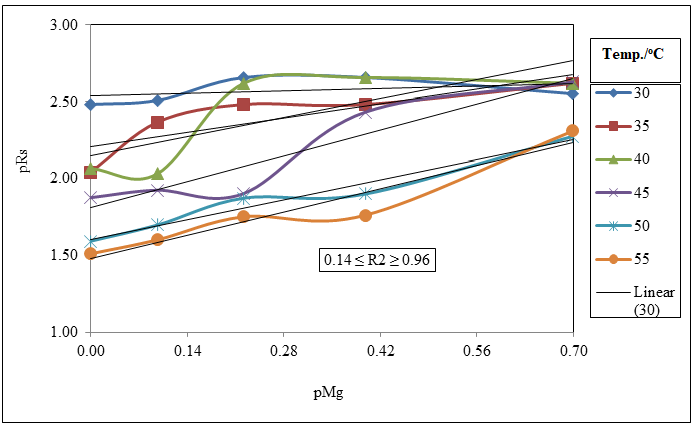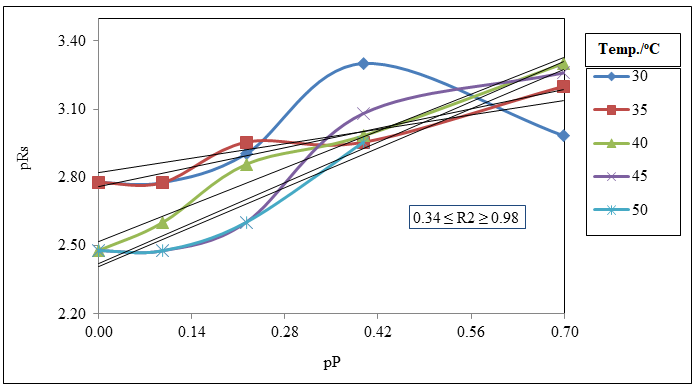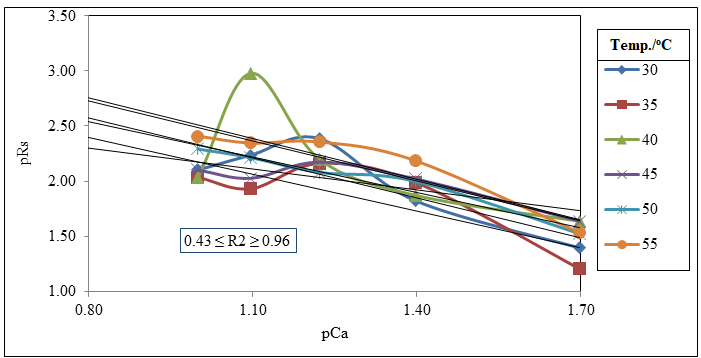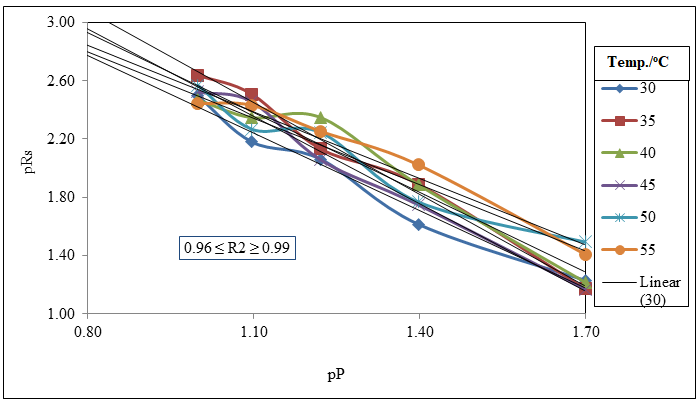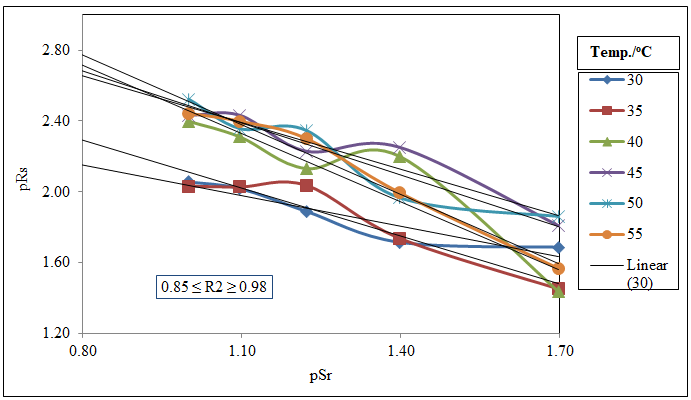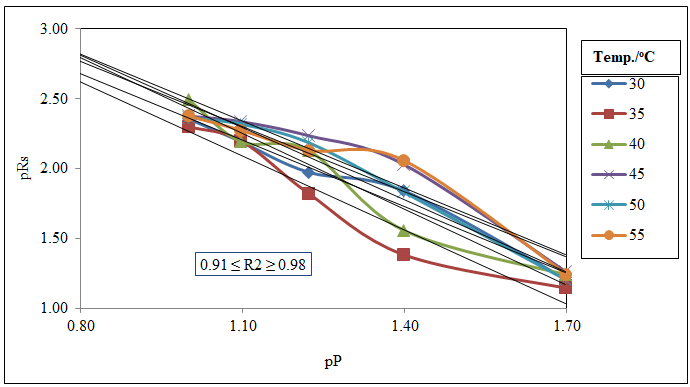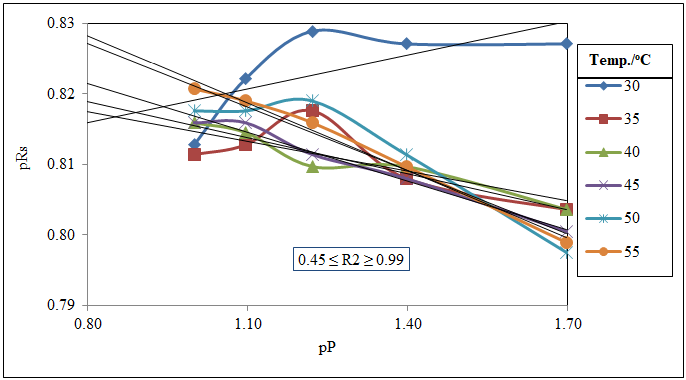Effect of Precursor Solution on Sedimentation of Alkaline-earth Phosphates at Different Temperatures
- A. Cookey
- D. S. Iboroma
- N. J. Maduelosi
- 102-109
- Mar 30, 2024
- Education
Effect of Precursor Solution on Sedimentation of Alkaline-earth Phosphates at Different Temperatures
A. Cookey1; *D. S. Iboroma2; N. J. Maduelosi1
1Department of Chemistry, Rivers State University, Port Harcourt, Nigeria
2Pollution Control Department, Rivers State Ministry of Environment, Port Harcourt, Nigeria
*Corresponding Author
DOI: https://doi.org/10.51584/IJRIAS.2024.90312
Received: 13 February 2024; Revised: 24 February 2024; Accepted: 29 February 2024; Published: 01 April 2024
ABSTRACT
Kinetic study of sedimentation of alkaline-earth phosphates-magnesium phosphate (MP), calcium phosphate (CP), strontium phosphate (SP) and barium phosphate (BP) precipitates was carried out by varying reactant concentration approach involving turn-wise variation of precursor metal ions (Mg2+, Ca2+, Sr2+ and Ba2+) and phosphate ion (PO43-) concentrations, and monitoring the settling of the precipitate formed in a precipitate sedimentation measurement apparatus. A pseudo-rate order equation, associated with the approach of varying reactant concentration, was linearized, and the dependence of precipitate sedimentation on precursor concentration, established therewith. Whereas MP precipitate gave positive order-sedimentation increased with increase in concentrations of precursor solutions, orders of CP, SP and BP precipitates were negative-sedimentation decreased with increase in concentrations of precursor solutions. Inter-particle attraction and repulsion associated with high solid concentration, volume of precipitate particles formed as well as chemical interactions of precipitate with the mother solution might have caused these effects.
Keywords: sedimentation, precipitate, mother solution, magnesium phosphate, calcium phosphate, strontium phosphate, barium phosphate
INTRODUCTION
Sedimentation (of precipitate) describes the settling of solid-phase particles produced within a liquid medium. It is a vital pre-treatment process in water purification technology for the removal of heavy metals including lead and arsenic [1]. Removal of dissolved mineral species can be achieved by the addition of suitable precipitating reagents which convert soluble impurities into insoluble precipitates and removed by sedimentation [2]. Alkaline-earth metals such as magnesium, calcium and strontium occur in natural waters as hardness ions. Their precipitation as insoluble phosphates and subsequent sedimentation of same remain a cheap and reliable alternative removal strategy. Physical and chemical conditions such as pH and temperature can be adjusted to influence the size, shape and structure of the particles, and thus their sedimentation [3]. In this work, the sedimentation of insoluble alkaline-earth phosphates precipitates, in their mother solutions was studied by turn-wise variation of metal and phosphate ions concentrations, at different temperatures. The objective is to present the effect of precursor concentration on sedimentation of alkaline-earth phosphates precipitates. Also, data may serve as information for identifying best conditions for physicochemical phosphate removal in water purification technology.
METHODOLOGY
Standard solutions of the salts (Mg(NO3)2.6H2O, CaCl2, SrCl2.6H2O, Ba(NO3)2 and Na3PO4 were prepared by weighing appropriate quantities and dissolving each salt in de-ionized water. Suspension of magnesium phosphate (MP), calcium phosphate (CP), strontium phosphate (SP) or barium phosphate (BP) precipitate was formed by mixing solutions of varying concentration of Mg(NO3)2, CaCl2, SrCl2 or Ba(NO3)2 with solutions of varying concentration of Na3PO4. Equation 1 illustrates the precipitation of metal (M = Mg2+, Ca2+, Sr2+ or Ba2+) phosphate as the insoluble phase (precipitate).
3M2+ (aq.) + 2(PO4)3- (aq.) → M3(PO4)2 (s) (1)
Other materials included precipitate sedimentation measurement apparatus and LED rechargeable desk touch (lamp) for proper illumination [4, 5]. Experimental approach employed in this work, involving turn-wise variation and isolation of reactant concentration has been described in previous reports [6, 7]. Slight modifications to describe development of the Method follow: In the turn-wise variation and isolation method, the dependence of sedimentation on the concentration of each of the reactant ions that formed the sedimenting precipitate was evaluated by keeping constant (isolation) the concentration of one of the reactant ions and varying the concentration of the other. The sedimentation rate, of the precipitate formed, near the beginning (initial rate) of the reaction was measured. The experiment was repeated with different starting concentrations of the reactant ions being varied, but still keeping the concentration of the other the same. The process was then reversed in which another series of experiments were conducted by varying the concentration of the other reactant ions at different temperature settings (30oC to 55oC) of the precipitate sedimentation measurement apparatus. The turn-wise variation and isolation of reactant concentration enabled the determination of the sedimentation orders of magnesium, calcium, strontium and barium phosphate precipitates by employing the pseudo rate order law (equation 2) associated with the turn-wise variation.
(2)
For each variation, the rate expressions with respect to the metal and the phosphate ions concentrations are given, respectively, as
3,4
KsM and KsP and a and b are the sedimentation rate constant and order of sedimentation of the precipitates with respect to metal ions and phosphate ions, respectively. From values of the measured sedimentation rates, with respect to metal ion precursor, RsM or phosphate ion precursor, RsP, at the various temperatures, linearized forms of equations 3 and 4, given as Equations 5 and 6, have been plotted.
RESULTS
Sedimentation of Magnesium Phosphate Precipitate
Log values of magnesium and phosphate ions concentrations and measured sedimentation rate of MP precipitate are plotted in Figures 1 and 2 as (-logRs) versus (-log[Mg2+]) and (-log[PO43-]), for MP precipitate at the different temperatures (30oC – 55oC). The sedimentation order with respect to the magnesium ions (a) ranged from 0.11 to 1.20 and from 0.45 to 1.27 with respect to the phosphate ion (b)
Figure 1: Effect of Magnesium ion Concentration on Sedimentation Order of MP Precipitate at Different Temperatures
Figure 2: Effect of Phosphate ion Concentration on Sedimentation Order of MP Precipitate at Different Temperatures
Sedimentation of Calcium Phosphate Precipitate
Similarly, log values of calcium and phosphate ions concentrations and measured initial sedimentation rates have been plotted in Figures 3 and 4 as (-log Rs) versus (-log[Ca2+]) and (-log[PO43-]), for CP precipitate. At the various temperatures (30oC – 55oC), the sedimentation order with respect to the calcium ions (a) ranged from -1.23 to -0.63 and from -2.10 to -1.52 with respect to the phosphate ion (b).
Figure 3: Effect of Calcium ion Concentration on Sedimentation Order of CP Precipitate at Different Temperatures
Figure 4: Effect of Phosphate ion Concentration on Sedimentation Order of CP Precipitate at Different Temperatures
Sedimentation of Strontium Phosphate Precipitate
Figures 5 and 6 show plots of computed log initial sedimentation rate versus log concentration as (-log Rs) versus (-log [Sr2+]) and (-log [PO43-]), for SP precipitate. At the various temperatures (30oC – 55oC), the sedimentation order with respect to strontium ions (a) ranged from -1.31 to -0.58 and from -1.81 to -1.55 with respect to the phosphate ion (b).
Figure 5: Effect of Strontium ion Concentration on Sedimentation Order of SP Precipitate at Different Temperatures
Figure 6: Effect of Phosphate ion Concentration on Sedimentation Order of SP Precipitate at Different Temperatures
Sedimentation of Barium Phosphate Precipitate
Finally, computed log initial sedimentation rate versus log concentration as (-log Rs) versus (-log [Ba2+]) and (-log [PO43-]), for BP precipitate are plotted in Figures 7 and 8, respectively. The sedimentation order with respect to barium ions (a) ranged from -0.013 to 0.029 and from -0.032 to 0.016 with respect to the phosphate ion (b) at the various temperatures (30oC – 55oC).
Figure 7: Effect of Barium ion Concentration on Sedimentation Order of BP Precipitate at Different Temperatures
Figure 8: Effect of Phosphate ion Concentration on Sedimentation Order of BP Precipitate at Different Temperatures
DISCUSSION
Reactant concentration affects sedimentation by altering medium viscosity indirectly through change in precipitate content (particle saturation) [4]. Thus, the pseudo rate order law (equation 2), methodically similar to precipitate sedimentation equation by Essien [8], was adopted and used to establish the influence of the metal ions-Mg2+, Ca2+, Sr2+ and Ba2+ and phosphate ion-(PO43-) concentration on sedimentation rates of MP, CP, SP and BP precipitates in the mother solutions. The perfect correlations (0.85 ≤ R2 ≥ 0.98) obtained in the sedimentation order plots (Figures 1 – 8), except for a few cases, are indicative of the dependence of precipitate sedimentation on concentrations of precursor solutions, mixed. With the exception of MP precipitate, the results of CP, SP and BP precipitates sedimentation rates described a decreasing trend in sedimentation with concentration, suggesting positive dependence for MP precipitate (Figures 1 and 2) and negative dependence for CP (Figures 3 and 4), SP (Figures 5 and 6) and BP (Figures 7 and 8) precipitates. The trend recorded for MP precipitate is in agreement with observations made during the tests. It was observed during the tests that cloudiness of MP suspension decreased as the concentration of magnesium ion, Mg2+, or phosphate ion, PO43-, mixed was increased. For CP, SP and BP, it was observed that haziness of the suspensions (particularly CP and SP) increased with increase in concentration of the precursor solutions. Hence, decrease in initial sedimentation rate with concentration was expected. Physically, influence of concentration on sedimentation is predicated on the amount of precipitate formed; the higher the concentration of precursor solutions mixed, the higher the amount of precipitate formed, and the slower the sedimentation rate would be. Increase in concentration of ions in solution increases particle saturation and this imparts additional viscosity to a suspension medium, resulting in slower sedimentation of the particles [9, 10].
Critical look at Figures 1 to 8 also reveals that for MP, sedimentation order varied with temperature, but not for CP, SP and BP. The reason for this is not obvious but may have cued from the same observation that cloudiness of MP decreased in the reaction mixture while haziness of CP, SP and BP suspensions increased. Ideally, both reactant concentration and temperature had significant effect on precipitate sedimentation when considered separately [11, 12]. At higher concentration of metal and phosphate ions mixed, resistance increased due to precipitate concentration increase in reaction mixture while at higher medium temperature, viscosity drops hence decreased resistance of particles to settle. However, when conditions (reactant concentration and temperature) are varied simultaneously, as was the case in this work, the possibilities of having precise control over unavoidable interactions became low. This made initial sedimentation of precipitate somewhat difficult to predict, especially above 0.07M precursor concentration, where degree of particle saturation and nucleation was greatest, and above 50oC medium temperature, where particle-medium interactions were highest. When reactant concentration and temperature simultaneously vary, the resultant event, according to Iboroma et al. [13], would depend on the contribution of each variable to the sedimentation process. According to the researchers [13], at low reactant concentration and high temperature, decrease of viscosity out-weighed interactions, and initial sedimentation rate increased. At high reactant concentration and temperature, interactions out-weighed decrease of viscosity, and initial sedimentation rate decreased. High reactant concentration heightens particle-particle interactions just as high temperature promotes particle-medium interactions [14]. Also, chemical interactions of precipitate with the mother solution, such as those that lead to dissolution of precipitate or formation of entirely new chemical species, and other interactions due to surface adsorptions and solution-driven interaction of precipitates with H+ and OH–, affect sedimentation behaviours of precipitates in an aqueous environment [15, 16].
CONCLUSION
The dependence of sedimentation rate of the alkaline-earth phosphates [(Mg3(PO4)2, Ca3(PO4)2, Sr3(PO4)2 and Ba3(PO4)2] precipitates on concentration of the precursor metal ions (Mg2+, Ca2+, Sr2+ and Ba2+) solutions and the precursor non-metal ion (PO43-) solution has been investigated. Data obtained fitted well the pseudo rate order law, implying the dependence of sedimentation rate on concentration of the precursor solutions mixed. Inter-particle attraction and repulsion associated with high solid concentration, volume of precipitate particles formed as well as chemical interactions of precipitate with the mother solution might have caused these effects.
REFERENCES
- Lin, P.; Zhang, X.; Yang, H.; Li, Y. and Chen, C. (2015). Applying chemical sedimentation process in drinking water treatment plant to address the emergent arsenic spills in water sources. Frontiers of Environmental Sciences & Engineering, 9 (1), 50 – 57.
- Dolgonosov, B. N. (2005). Kinetics of sedimentation of a coagulating suspension. Theoretical Foundations of Chemical Engineering, 39 (6), 635 – 642.
- Sahu, O. P. and Chaudhari, P. K. (2013). Review on chemical treatment of industrial waste water. Journal of Applied Science and Environmental Management, 17 (2), 241 – 257.
- Iboroma, S. D. (2019). Factors Influencing Sedimentation Characteristics and Profiles of Alkaline-earth Metal Phosphates in Aqueous Solution. Port Harcourt, Rivers State, Nigeria (unpublished PhD Thesis). Rivers State University.
- Iboroma, D. S.; Cookey, G. A.; Obunwo, C. C. and Amadi, K. G. (2020). Sedimentation profile of strontium phosphate precipitate in aqueous medium. NIPES Journal of Science and Technology Research, 2 (3), 113 – 118.
- Obunwo, C. C.; Iboroma, D. S. and Bagshaw, A. P. (2017). Effects of physical variables on settling velocities of calcium and strontium phosphates in mother solution. Journal of Applied Science and Environmental Management, 21 (2), 307 – 311.
- Obunwo, C. C.; Iboroma, S. D. and Cookey, G. A. (2017). Influence of temperature and ion concentration on sedimentation characteristics of tricalcium phosphate (TCP) and tristrontium phosphate (TSP) Precipitates. Journal of Applied Science and Environmental. Management, 21(7), 1374 – 1377.
- Essien, I. O. (1992). Studies on sedimentation of transition metal hyudroxides. Tropical Journal of Applied Science, 2, 122 – 125.
- Punnamaraju, S. R. (2012). The Evaluation of the Sedimentation Behaviour of Magnesium Hydroxide in the Never Dried State. Toledo, Ohio, USA(unpublished MSc Dissertation). University of Toledo.
- Mastropietro D. J.; Nimroozi R. and Omidian H. (2013). Rheology in pharmaceutical formulations-A perspective. Journal of Developing Drugs, 2 (2), 1 – 6.
- Winkler, M. K. H.; Bassin, J.P.; Kleerebezem, R.; Vanderlans, R. G. J. M. and Vanloosdrecht, M.C. M. (2012). Temperature and salt effects on settling velocity in granular sludge technology.Water Research, 46, 3897 – 3902.
- Nutan, M. T. H. and Reddy, I. R. (2010). General principles of suspensions. In: Kulshreshtha, A. K. (ed.) Pharmaceutical Suspensions: From Formulation to Development, p.59. New York, NY: Springer-Verlag.
- Iboroma, D. S.; Cookey, G. A.; Obunwo, C. C. and Amadi, K. G. (2020). Evaluation of the effects of temperature and ion concentration variables on sedimentation of magnesium and barium phosphates in aqueous media. International Journal of Scientific and Research Publications, 10, (2), 565 – 571.
- Gary, D. (2004). Analytical Chemistry (6th ed.). Singapore: John Wiley.
- Bouchoud, L.; Fonzo-Christie, C.; Sadeghipour, F. and Bonnabry, P. (2010). Maximizing calcium and phosphate content in neonatal parenteral nutrition solutions using organic calcium and phosphate salts. Journal of Parenteral and Enteral Nutrition, 34 (5), 542 – 545.
- Recillas, S.; Rodriguez-Lugo, V.; Montero, M. L.; Viquez-Cano, S.; Hernandez, L. and Castano, V. M. (2012). Studies on the precipitation behaviour of calcium phosphate solutions. Journal of Ceramic Processing Research, 13 (1), 5 – 10.

